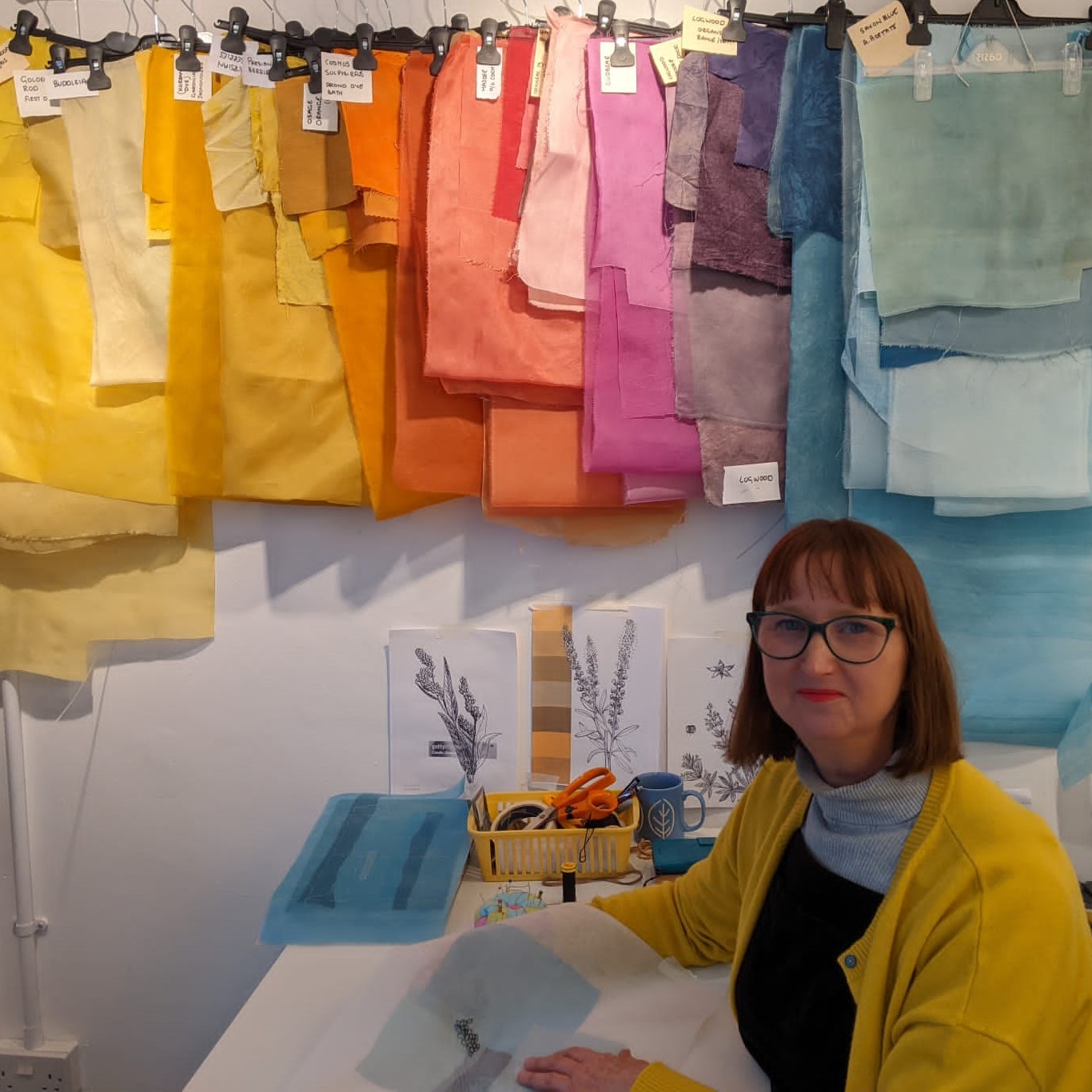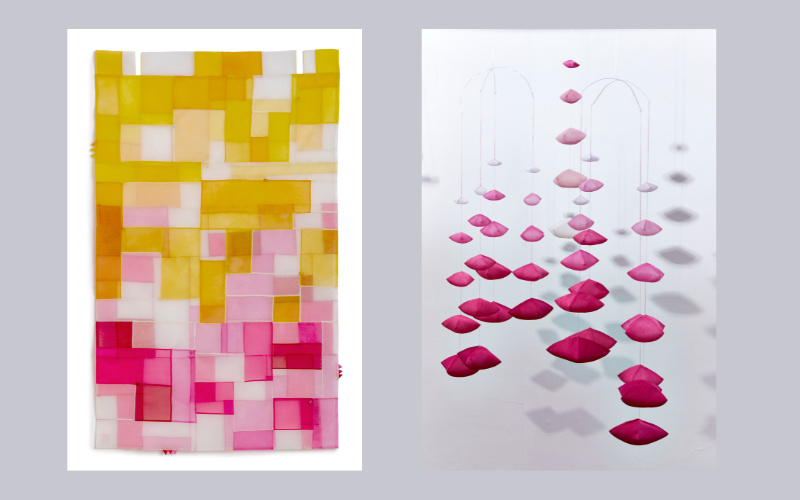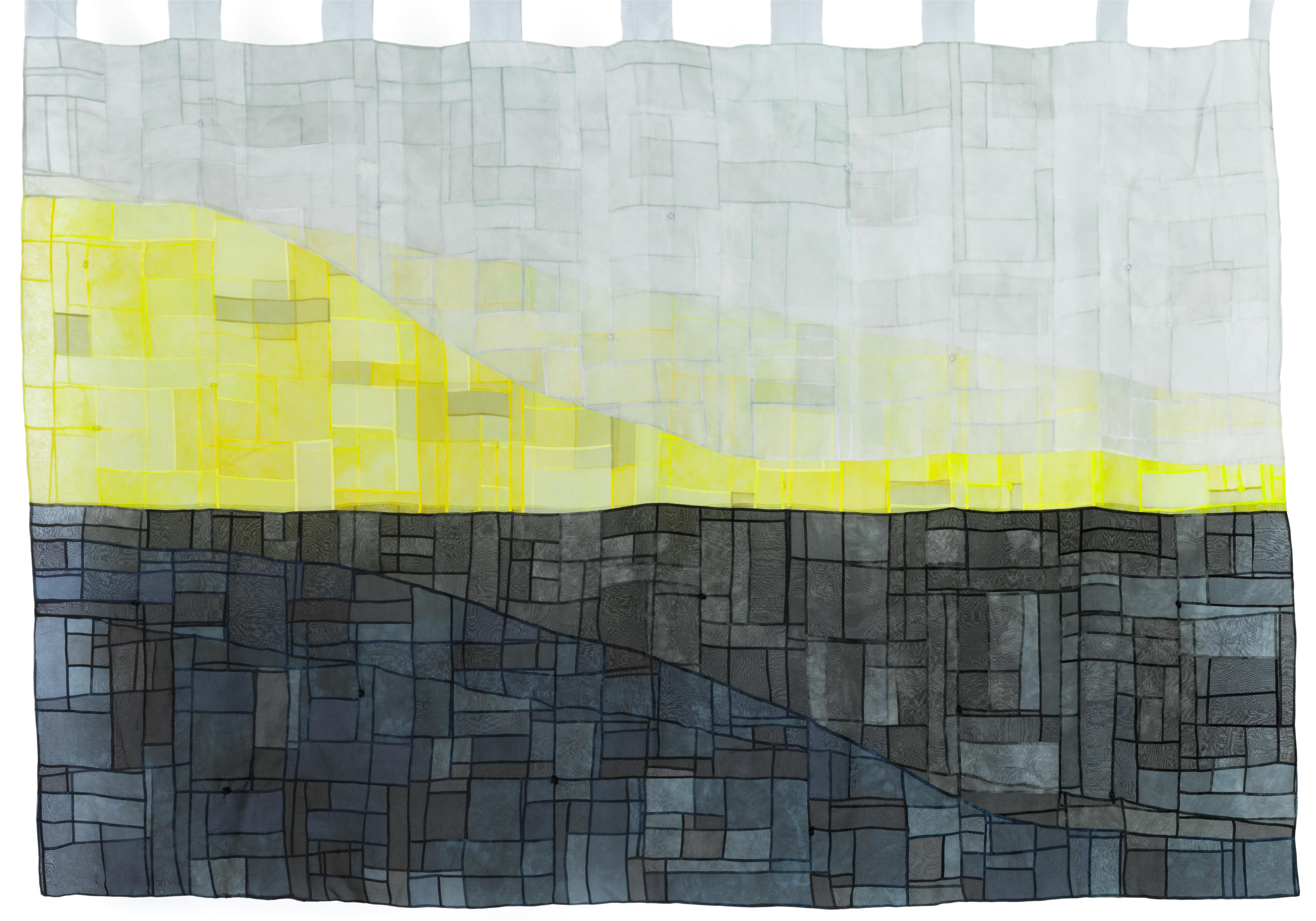Bojagi, the traditional Korean wrapping cloth, is not simply a fabric; it's a lot more than a fabric; it's an expression of spirit, culture, and history. Traditionally made from fabric scraps from other sewing, Korean women would use these cloths to wrap gifts or lay over special items, or wrap cloths as part of a ceremony. The patterns, seams, and colors have value in their efficiency and aesthetic charm. Over the years, Bojagi has evolved from a practical item to a form of art and has become a significant source of inspiration for artists and makers worldwide.
One such artist is Sara Cook, a textile artist, educator, and author whose work is influenced by the tradition of Bojagi. She has been studying the tradition for over a decade. Sara aims to introduce Bojagi to new audiences, creating a bridge between traditional Bojagi and contemporary textile art.
The following excerpts are from an email interview conducted between 23rd and 28th September. In this conversation, Sara discusses her journey, inspiration, and her hopes for the future of bojagi as a living art form.
Q1. Could you please introduce yourself, and how did you start your journey as a textile artist?
I am a textile artist, tutor, and author of Bojagi: Design and Techniques in Korean Textile Art. For more than ten years, I have been researching the history and construction of bojagi, the Korean wrapping cloths. I first became interested in this art form in 2009 when I saw the contemporary exhibition My Cup Overflows by Chunghie Lee at the Festival of Quilts. I was both intrigued by the construction and captivated by the use of transparency. That moment sparked a journey of research, travel, and creative exploration that continues to this day.

Q2. What was it about Bojagi that resonated with your heart? And what led you to dedicate yourself to this traditional Korean textile art?
Chunghie Lee’s exhibition was inspired by all those unknown women who had made beautiful wrapping cloths collectively known as bojagi. Their work deeply moved me. It led me to start researching Korean wrapping cloths and gave me opportunities to travel and exhibit my own work in the UK and Korea.
Invitations by Lee Chunghie to attend the Korean Bojagi Forums in 2016 and 2018 introduced me to many exciting new textile artists who have been inspired by the principles of bojagi in their work. It has given me the opportunity to work with teachers and to study museum collections in South Korea, all of which enriched my understanding and commitment to the tradition.
Q3. What sources of inspiration do you draw from in your own Bojagi designs, and how do they connect with imagination?
Researching Bojagi has inspired me to experiment with the traditional narrow seams, creating irregular grids. When this is combined with transparency, the seaming structure creates a further linear dimension often revealed in the shadows that they cast. This has enabled me to evoke the feeling of light moving across the landscape in recent work like The Grey Line.
For centuries, textiles were one of the few ways Korean women could express their creativity. The designs and symbolism in Bojagi now inspire many textile artists around the world. You will see how Bojagi has been reinterpreted in many different types of media, including temporary land art structures.

(Credits: Michael Wicks and Lorna Allan)
Q4. You expressed that Bojagi is a way to express short-lived, transient experiences. How do you capture such momentary feelings in a lasting textile form?
My recent work has centered on observing the full moon each month, exploring its place in folklore and cultural traditions. Working with hand-dyed silk and ramie fabrics, I try to capture these fleeting impressions of light and shadow. The translucent qualities of the fabrics, combined with the patterns created by seams and their shadows cast against a wall, allow me to translate transient experiences into enduring textile form.
5. As the author of Bojagi: Design and Techniques in Korean Textile Art, how do you hope it will contribute to the preservation and spread of bojagi?
The book is the culmination of ten years of research into both historic practitioners and contemporary artists, those based in Korea and those practicing across the world. In putting this book together, I hope to share this knowledge so that even more people can be inspired by the ancient traditions whose designs can still spark innovation for the modern textile artist today. At the time of publishing, it was the first book available in English on the subject that was widely available.
6. How do you see bojagi evolving as a global textile art form, and what do you foresee for its future within contemporary textile art?
Interest in bojagi has been growing steadily, particularly since the publication of my book. I have given many lectures about bojagi both in the UK and internationally, and People are always excited by these exquisite textiles and fascinated to learn about the context in which they were made. I am regularly invited to travel to countries around the world to teach, including the US and Australia. I believe bojagi will continue to evolve as more artists worldwide reinterpret its principles in new media, from textiles to land art, ensuring it remains both relevant and inspiring.

7. How do you want to preserve bojagi in our modern world? And why? What motivates you to continue?
Since 1962, the government of Korea has subscribed to the system of Intangible Cultural Heritage to protect traditional arts and crafts. This preservation has been instrumental in preserving this traditional knowledge. Textile artists both in Korea and in the wider diaspora are increasingly inspired by this cultural tradition to create innovative work that both pushes the boundaries and continues to celebrate the qualities associated with Bojagi. Ambassadors like Lee Chunghie and early collectors like Huh Dong Hwa have been instrumental in bringing bojagi to international attention. Keeping traditions alive and relevant is the challenge to preserving them, and if I have in a small way contributed to that preservation, I am delighted.
How about this article?
- Like0
- Support0
- Amazing0
- Sad0
- Curious0
- Insightful0


